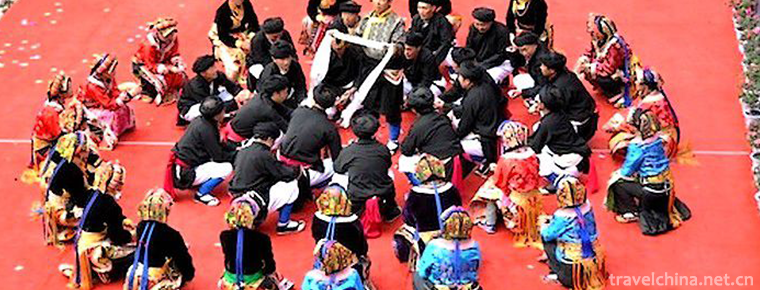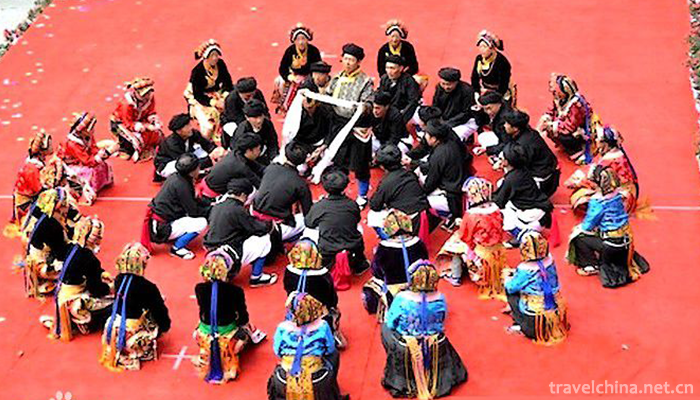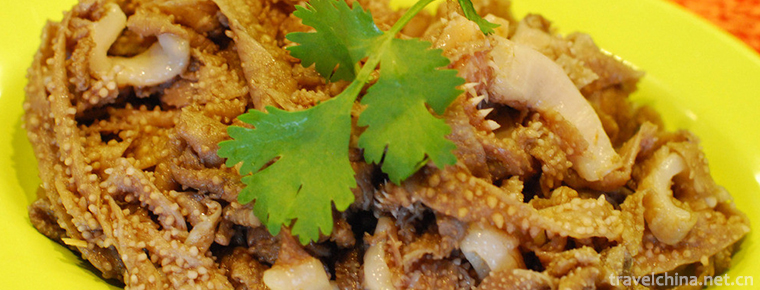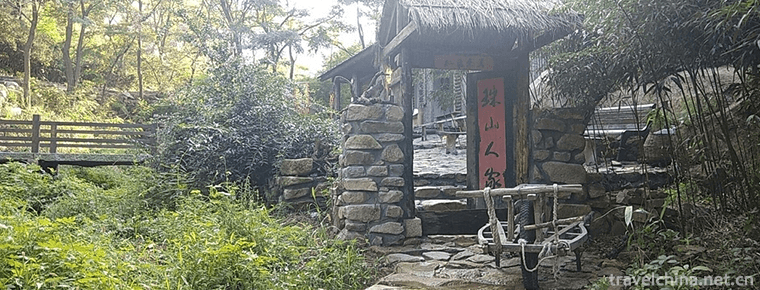2018-10-27

- By ChinaWiki.net
- Chinese Edition
- 2019-04-04
Bo Ba Shen en
Bobassengen is a unique folk large-scale narrative mass pot village dance created by Ganbao Tibetan Village in Jiarong Tibetan area, Lixian County, Sichuan Province. "Boba" Tibetan means "Tibetan" and "Sengen" Tibetan means "lion". The dance was created in the mid-19th century (during the reign of Qingdaoguang) by the soldiers returning from the southeast coast to commemorate their heroic deeds and sacrifices in fighting against the British army. It eulogizes the heroic image of the soldiers and fully expresses the patriotism of the Tibetan people. In 2007, it successfully declared the first provincial intangible cultural heritage in Lixian. In 2008, it was successfully declared as the second batch of national intangible cultural heritage list.
historical origin
In 1752 (the seventeenth year of Emperor Qianlong of Qing Dynasty), the Qing Dynasty carried out the reform and return of the Tusi in Aba Prefecture, implemented the defensive system, and established the system of troop stationing. When soldiers were idle, they served as peasants and fought in wartime. According to historical records, the troops were sent out eighteen times to fight against the invasion of Tibet by Gurka, the invasion of the British forces along the Southeast coast, and the Japanese aggressors on expeditions to Taiwan, thus making great contributions to the defence of the reunification of the motherland.
The dance originated in 1821-1850 (the reign of Qingdaoguang). Bobasengen is a sacrificial dance created by the soldiers and relatives returning from Ganbao Tibetan Village to commemorate the heroic deeds of the "Wutun" Tibetan and Qiangtun soldiers who died in the battle against foreign aggression. Usually, they do not jump, only during the Fifth Duanyang Festival in the early May of the lunar calendar, when the whole village people hold the "braided grave" sacrificial activities, they jump, also known as Duanyang Guozhuang. Sacrifice to Guozhuang, dancing with hundreds of people, with great momentum, expresses gratitude and appreciation for the warriors, aiming to let future generations always remember the achievements of the heroes. It eulogizes the heroic image of bravery and warfare in the army and fully expresses the patriotic feelings of the Tibetan people.
primary coverage
This pot village is divided into two parts, the melody is concise and clear, the form is diverse, has the lead singer, has the chorus, has the narrative solo. The whole dance process takes about two hours.
In the first part, the lead dancer, holding a string of bells, leads the dancers around the circle. The lead dancer leads the singing once, and the dancers follow the singing once, while singing and dancing. After singing a paragraph, the lead dancer begins to drill, that is, two of the dancers'right hands are raised, and the lead dancers begin to drill through it. The other dancers follow in turn, singing while drilling, and finally form a "twist". That is, all the dancers' left hand and the former dancers'right hand clasp and rest on the front dancer's right shoulder, and then begin to "understand", that is, all dancers return from the "twist" to hand in hand. In the process of reply, the leading dancers were gradually surrounded in the center. It means that only close unity can win. This part is the "Shang" mode in the national mode, which has strong narrative, deep melody, slow rhythm, sad and stirring mood, and makes people moved. The second part is about the solo singing in the center of the circle by the respected people, while the dancers sit and listen in situ, sing the heroic, hard and miss of the troops in the southeast coastal battle. After the singing, the dancers cheered and threw salonda, praying for good luck, happiness and health, and the pot farm was over. This part is the "palace" mode in the national mode, which has a strong contrast with the first part. The tune is shocking, the rhythm is strong, full of fortitude and self-confidence, which makes people feel strong tenacity and unity.
main features
The dance follows some of the characteristics of Situguozhuang, but creates dance forms such as drilling, twisting and understanding in the form of performance. It also creates a narrative singing form by the leader and the performance form listened to by the dancers, which has unique local characteristics. Especially the dance action of "twist" fully demonstrates the stubborn fighting scene of the soldiers in the battlefield. It is a body-wide, life-and-death hand-to-hand combat, which is unforgettable. The vigorous and magnificent dance steps and the changing formation show the connotation of the arduous journey and the united struggle to win the victory, and arouse people's rich emotional waves. "Ninety-nine rivers, ninety-nine pairs of straw shoes, marching in rainy days, camping in the wilderness, long-distance raids seize the city pool, Jingotianma sweep the sand field." A strong and vigorous scene emerges before people's eyes.
Non heritage information
Heritage Level: The Second Batch of National Non-material Cultural Heritage
Approval No. 19, Guofa
Approval date: 7 June 2008
Approval organ: State Council
Approval serial number: 665
Heritage Number: III-68
Heritage Category: Folk Dance
Project name: Bobasengen
Applicant: Lixian County, Sichuan Province

Ask a Question
Your email address will not be published.



0 Questions